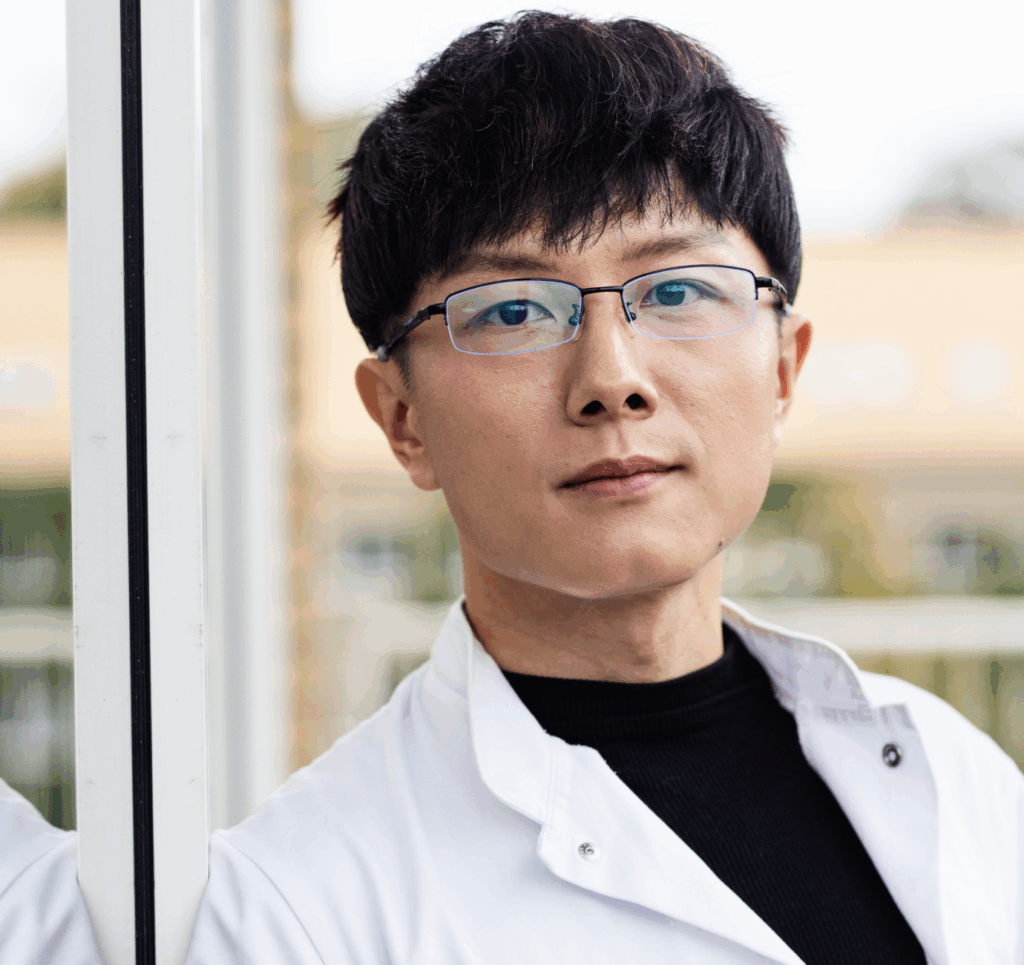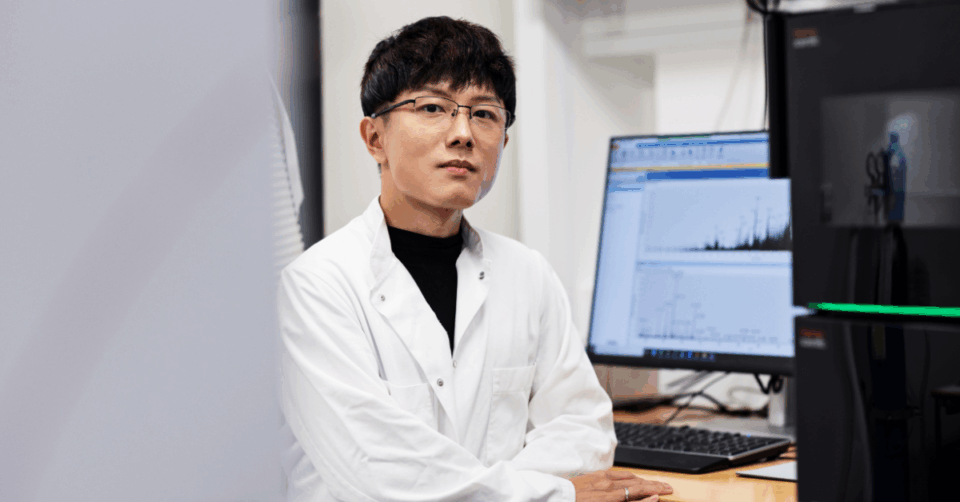18 November 2025
Xiang Zheng, Assistant Professor in Biomedicine at Aarhus University, wants to map the hidden ecosystem of skin diseases. The cutting-edge platform of the LEO Foundation Dr Abildgaard Fellow could be a step towards more precise and less invasive treatments.
Imagine a coral reef on the bottom of the ocean you know is there, but it is dark, so you cannot see it in detail. With the deeper layers of the skin, there is also a limit to what we know is going on. Assistant Professor Xiang Zheng has pioneered a new platform to cast light on this unseen territory. Called mipDVP (multiplexed imaging-powered Deep Visual Proteomics), it builds on the original Deep Visual Proteomics (DVP) technology by adding multiplexed imaging capabilities.
As a LEO Foundation Dr Abildgaard Fellow, he will focus on the protein landscape in the skin and how it shapes skin cancer or chronic inflammation. One outcome could be treatments that are tailored to the in-depth structure of each patient’s skin.
“A microscope can show me skin cells, but with the mipDVP platform, we can quantify the protein expression of specific cell types and, crucially, see their relationships in the space they share,” Zheng says.
This expanded view may make future treatment more precise by revealing exactly which cellular processes to target. It also enables a higher level of biological insight that could improve existing ways of diagnosing and treating patients.
“My medical training taught me to ask: What does the data mean for the patient? I am collaborating closely with doctors at the clinical level. I provide them with this deep molecular data, and their clinical expertise secures its relevance. It is important to have an ongoing conversation about what we are looking at and how it affects people. A technology fulfils its potential when it makes a difference for patients,” he says.
Bringing a new tool to his peers
While the technology is still emerging, each collaborator involved in the LEO Foundation-supported project is getting a sense of its potential. Zheng is working with dermatologists at Zealand University Hospital and Aarhus University Hospital alongside researchers at Aarhus University, the University of Copenhagen, and the University of Zürich. The funding included in Dr Abildgaard Fellowship also makes it possible to hire a PhD, two postdocs and a lab technician. The laboratory work will be conducted at Aarhus University.
“I get energy from building a team and introducing this technology to a young generation of researchers. I want to build an environment, where they have the courage to experiment and bring their own ideas,” Zheng says.
Among his goals is to better distinguish a type of skin cancer, mycosis fungoides, from chronic inflammation.
“We aim to identify protein markers at the cellular level when the cancer is still at an early stage and might resemble a simple rash. From these markers, we also want to pinpoint targets for early intervention.”
Making it easier for the patient
A central concern for him is to reduce invasiveness for the patient. The mipDVP platform uses standard archival tissue samples, extracting new molecular insights without the need for new biopsies. At the other end of the research journey, he hopes to contribute to less invasive treatments.
“Currently, we often use steroid creams to relieve symptoms. But we should aim for precision therapies guided by platforms like the one I work with. It could include advanced topical formulations. This would provide more targeted alternatives to systemic medicine that affects the whole body,” Zheng says.
One of the keys to achieving this vision is the platform’s ability to perform detailed mapping of the skin’s so-called host-microbiome interactions. “By mapping thousands of proteins within specific cell types alongside each other, we can reveal how cells truly interact. The better we map these relationships, the closer we come to developing precise and targeted therapies.”
Xiang Zheng, PhD
Assistant Professor, Department of Biomedicine, Aarhus University, Denmark
Project title: “Multiplexed Imaging-Powered Deep Visual Proteomics for Precision Dermatology”
What it covers: With a cutting-edge spatial proteomics technology, the project maps protein expression and immune interactions in skin samples. It has the potential to enable earlier diagnosis and more personalized treatments for skin disease.
Best advice for a young researcher: “Stay open to other perspectives and disciplines that can broaden your horizon on what future medicine can be.”
On receiving the LEO Foundation Dr Abildgaard Fellowship: “The support from the LEO Foundation makes it possible for me to build a dedicated research team and accelerate our vision of bringing spatial precision medicine to dermatology. It is a game changer for my career.”

